Hybrid cucumbers "Paratunka" with excellent germination and rich harvest
It's hard to imagine a salad without cucumbers, especially in the summer. Almost all of us use them in one form or another, pickle them, preserve them, treat relatives and friends, and grow them for sale. Even in ancient times, Christopher Columbus added cucumbers to the diet of sailors to protect them from scurvy, and the famous Egyptian queen Cleopatra said that she owed her beauty to them.
Cucumber is popular not only in cooking - it also occupies a leading position in breeding work. With his participation, new varieties and hybrids are constantly being created. The advantage of the latter is that they combine the best qualities taken from the parent varieties. One of such hybrids is Paratunka F1, which has been among the sales leaders for several years. Let's get to know him better.
The content of the article
Description of cucumbers
The Paratunka F1 hybrid was created in 2006 based on the popular Parus variety, supplied by the Russian company "Semko-junior". It has a good yield and is not particularly picky about growing conditions.

Distinctive features
Hybrid suitable for cultivation in summer cottages and for industrial production on farm cucumber plantations.
Paratunka gives a large yield when grown both on trellises and on the ground... Moreover, on the soil, the lashes quickly begin to take root. Vegetable growers have long noticed this distinctive feature and use it to strengthen the root system of a plant, which in cucumbers, especially hybrid ones, is traditionally weak and susceptible to disease.
Composition and properties
Like most of their brethren, cucumber Paratunka is 95% water... The fruit has almost no voids and few seeds.
Nutritional value of the product (per 100 g):
- calorie content - 14 kcal;
- proteins - 0.8 g;
- fat - 0.1 g;
- carbohydrates - 2.5 g;
- organic acids - 0.1 g;
- fiber - 1 g;
- glycemic index - 25.
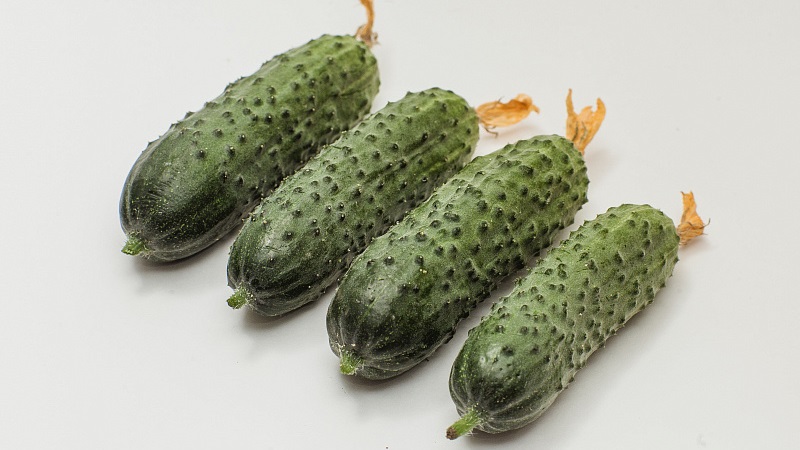
Besides, the culture is rich in vitamins C and K, groups A and B... The fruit contains minerals such as iron, copper, manganese and many others. Cucumbers also contain iodine, which prevents thyroid diseases.
Regular consumption of fresh cucumbers in food can help remove small stones and sand from the kidneys, and improve intestinal motility. But the vegetable is contraindicated to include in the diet if the calculi in the kidneys and bile ducts are large.
The use of fruits accelerates the excretion of fluid from the body, which lowers blood pressure, so hypotensive patients should use cucumbers with caution.
Paratunka hybrid characteristics
The plant is medium-sized, medium bushiness... With good care, the bushes can stretch up to 3 m in length.
Leaves are dense, light green or dark in color, medium in size. Pollination is not required for the hybrid, it is parthenocarpic, that is, only female flowers grow on the bushes.
Paratunka is an early ripe hybrid. The first fruits are harvested about a month after germination. Fruiting continues until the first frost, almost the entire season.
Fruits grow about 9 cm long, up to 3 cm in diameter... The skin color of cucumbers is dark green, the weight of a cucumber is on average 100 g. The fruits have few tubercles and pronounced thorns, have a characteristic cucumber aroma, and the flesh is crispy. The taste of these cucumbers is sweetish.
Productivity with proper care is 15-17 kg per 1 sq. m.
How to grow yourself
The Paratunka hybrid is easy to grow even for an inexperienced gardener - using seeds or through seedlings.
Other hybrids for your site:
Early ripe hybrid "Bettina" for greenhouses, open ground
Hybrid "Boyfriend" for growing in adverse conditions
Hybrid "Emelya": advantages and disadvantages, care features
Planting by seed and seedling method
Planting and caring for the Paratunka hybrid is not much different from the cultivation of other varieties of cucumbers.
In most regions of our country, crop seeds are planted in open ground in the first decade of May.... You can use both germinated and dry planting material. For germination, just wrap the seeds with damp gauze. In a few days, sprouts will appear.
On the beds, the distance between the planting holes should be at least 25 cm, between the rows - up to 75 cm. Per 1 sq. m usually plant 3-4 plants.
The depth of the holes is 2 cm. Before planting the seeds, pour hot water over the soil. Usually 2-3 seeds are placed in one hole, sprinkled with earth on top and lightly sprayed with warm, settled water. When shoots appear, one sprout is left, the most viable and strong, while the rest are removed.
Attention! Before emergence, the beds are covered with foil to create a greenhouse effect.
It is better to prepare the garden in the fallby fertilizing the soil with mullein or chicken droppings.
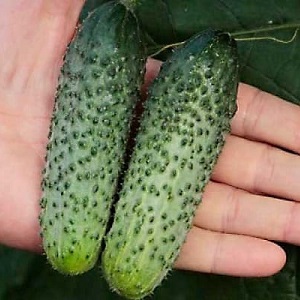 According to the creators of the Paratunka F1 hybrid, initially it was intended only for greenhouses. But later it turned out that the plant grows well in the open field, while the harvest ripens faster if it is planted through seedlings.
According to the creators of the Paratunka F1 hybrid, initially it was intended only for greenhouses. But later it turned out that the plant grows well in the open field, while the harvest ripens faster if it is planted through seedlings.
To obtain seedlings, seeds are disinfected, soaked and planted in separate plastic or peat cups. The root system of the hybrid is weak, especially the upper roots, so Paratunka does not tolerate a pick.
Peat tablets, leaf humus and garden soil are used as soil.... It is recommended to place drainage or sawdust on the bottom of the pots. Landing in open ground is carried out after the formation of the fourth sheet.
Important! It is not recommended to violate the landing dates. If the seedlings are planted earlier, their growth in the open field will slow down for a long time. If you delay the deadlines, the bushes will unnaturally stretch and become unviable.
Correctly and on time planted seedlings will begin to grow in a few days.
Growing in stages and care
If the seeds of cucumbers are planted directly in the ground, they, like the seedlings, are covered with foil or glass until shoots appear, and then removed.
As you grow, you should constantly increase the amount of watering... Always watered plants with warm water, preferably in the evening. On hot days - every day, in cloudy weather - once every 2-3 days.
When the Paratunka hybrid begins to bear fruit, the crop is harvested every other day, preventing the cucumbers from overgrowing.
Attention! The bushes are loosened carefully - the upper part of the root system of Paratunka cucumbers is located at the very surface, therefore it is very vulnerable. It is best to immediately mulch the garden bed or sprinkle it with sawdust.
Throughout the growing season, about once every 10 days, do top dressing. To do this, use an infusion of mullein, diluted with water in a ratio of 1:10.
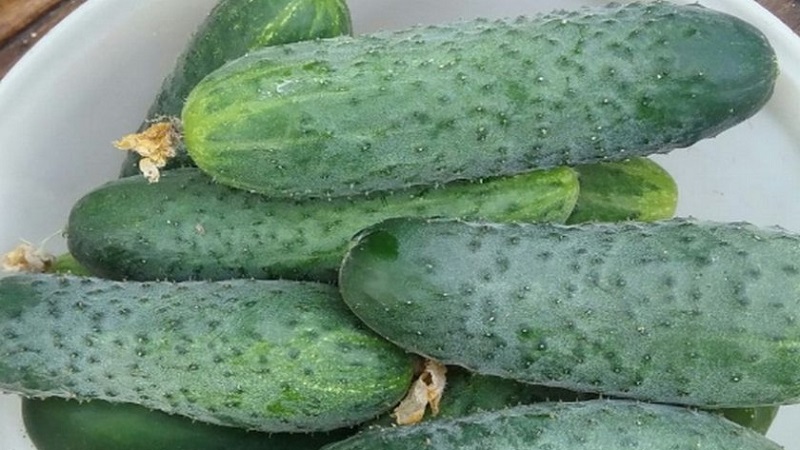
Features of cultivation and possible difficulties
Insofar as hybrid refers to early maturing, it has a rapid growth of the stem, so it is recommended to pinch it. When grown without trellises, the stem is sprinkled with earth in several places. The Paratunka hybrid is well rooted in such a way that it provides more nutrients to the plant.
Often there is a formation in a plant barren flowers... This happens when there is an excess of nitrogen. The situation is corrected by introducing "Nitrofoska" into the soil.
Diseases and pests
The hybrid is relatively resistant to major diseases of cucumbers and pests... But with improper care or adverse weather conditions, some of them may appear:
- powdery mildew - occurs if the area is poorly ventilated;
- peronosporosis, cladosporiosis, anthracnose - they affect bushes during the lingering rainy season;
- spider mite - may appear in a drought;
- thrips and whitefly - infect the leaves.
Special insecticidal preparations are used to combat... Adherents of organic farming use folk methods: ash, infusions of onion husks and garlic, iodine and potassium permanganate.
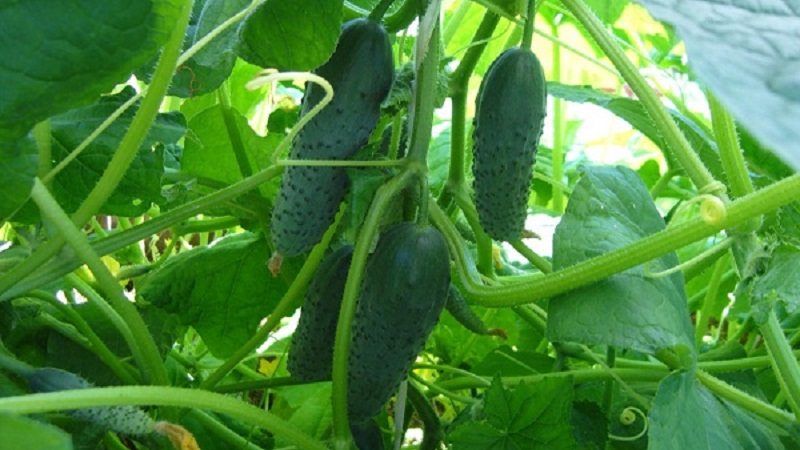
To prevent diseases and pests, follow the rules:
- periodically ventilate the covering structures;
- provide fresh air to the garden, but protect it from drafts;
- regularly inspect the bushes for possible pathologies;
- periodically change planting sites, observing the rules of crop rotation.
It is advisable not to allow direct sunlight on the bushes. for a long time - this can cause burns and death of leaves.
Harvesting and application of the crop
The harvest of the Paratunka hybrid is harvested before the end of autumn... The fruits are tasty in various salads fresh, well suited for pickling and salting due to the small amount of seeds. Good keeping quality allows cucumbers to tolerate long transportation without problems.
Advantages and disadvantages
These cucumbers have a lot of advantages.:
- start to bear fruit early;
- the harvest season ends with the first frost;
- fruiting is continuous;
- well tolerate long-term transportation;
- the plant does not require insect pollination;
- high resistance to diseases;
- high productivity;
- the fruit never takes on a bitter taste.
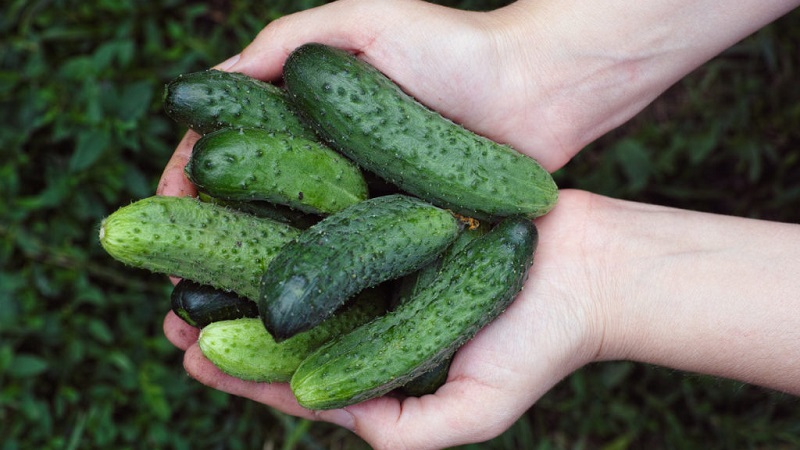
The disadvantages of a hybrid include its inability. to propagation by grown seeds, which is typical for all hybrids. There are several other factors:
- weak root system;
- the need for frequent watering;
- when forming a bush, the installation of additional props is required.
Generally Paratunka cucumbers have much more advantages than disadvantages, which is noted by many gardeners.
Reviews
Reviews about the hybrid Paratunka F1 mostly positive... Long-term fruiting and lack of bitterness in the fruits are especially captivating for cucumber lovers.
 Valery, Rostov: “For some time now I have increased the area of the summer cottage and, accordingly, the crops. I decided to plant more cucumbers. When the question arose of which variety to choose, from the hybrids I preferred Paratunka. Our family liked these cucumbers for the duration of fruiting and high yields. Fresh fruit salad was prepared almost until late autumn ".
Valery, Rostov: “For some time now I have increased the area of the summer cottage and, accordingly, the crops. I decided to plant more cucumbers. When the question arose of which variety to choose, from the hybrids I preferred Paratunka. Our family liked these cucumbers for the duration of fruiting and high yields. Fresh fruit salad was prepared almost until late autumn ".
Galina, Novgorod: “All my life I have grown ordinary cucumbers, I was suspicious of hybrids, considering them almost mutants. What kind of cucumber is it if nothing worthwhile can be grown from its seeds? The son and his daughter-in-law have been growing the Paratunka hybrid for several seasons. And I got attached to him: cucumbers are even, elastic, never bitter, ideal for pickling. So now my opinion about hybrids is positive. ".
Inna, Belgorod: “We grow cucumbers for sale with my husband. The Paratunka hybrid tolerates transportation well, merchants willingly take it. Practically did not encounter diseases, they taste good too: sweetish, with a crunch ".
Conclusion
Paratunka belongs to the high-yielding early-maturing type of hybrids, therefore it quickly gained popularity. The taste of both fresh and canned fruits will delight any gourmet. Their small size makes it easy to pickle such cucumbers in containers of any size.
It is not difficult to take care of these cucumbers - you only need to follow the simple rules of agricultural technology. Try to grow a Paratunka hybrid in your area - it will delight you with long fruiting and a large harvest!